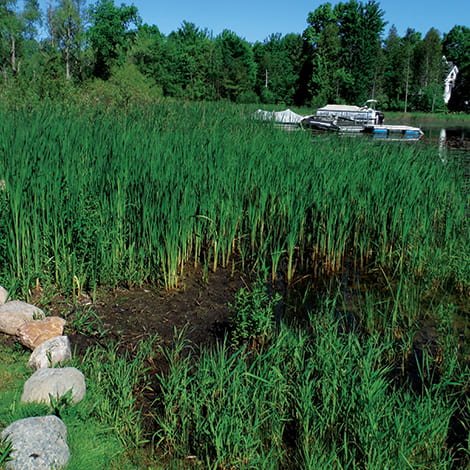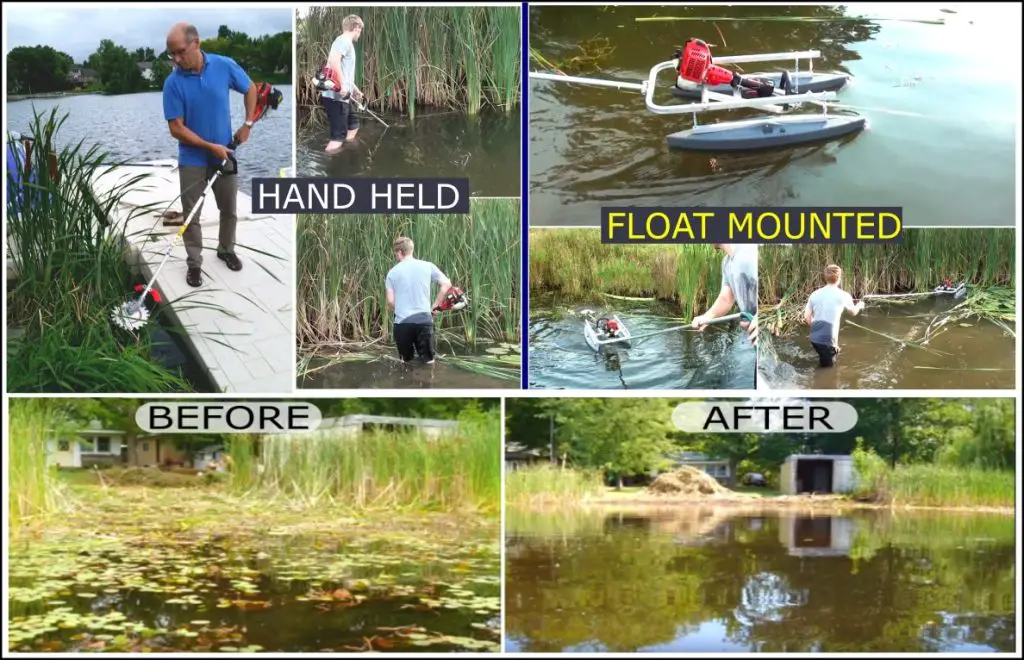Cattails are common aquatic plants that can quickly take over a pond if left unchecked. While they can provide some benefits to the ecosystem, an overabundance of cattails can lead to issues such as limited oxygen levels, stagnant water, and an unsightly appearance. If you’re dealing with an invasion of cattails in your pond, don’t worry, there are several effective methods to get rid of them and restore the balance to your aquatic environment.
1. Manual Removal
One of the simplest ways to control cattails in your pond is through manual removal. You can use a shovel, rake, or specialized aquatic weed cutter to physically cut and remove the cattails. Make sure to remove the entire plant, including the roots, to prevent regrowth. This method is best suited for smaller infestations or when the cattails are still young and manageable.
2. Chemical Control
For larger cattail populations, chemical control may be necessary. Herbicides specifically designed to target aquatic plants like cattails can be effective in controlling their growth. It’s important to carefully follow the instructions on the product label and consider the potential impact on other aquatic life in your pond. Chemical control should be used as a last resort and in accordance with local regulations.
3. Mechanical Control
Mechanical control methods, such as cutting or mowing the cattails, can help reduce their spread and density. Specialized equipment like aquatic weed harvesters or cutters can be used to efficiently remove cattails from larger ponds. Regular maintenance is key to preventing cattails from regrowing and spreading, so consider implementing a schedule for mechanical control measures.

Credit: www.thepondguy.com
4. Biological Control
Introducing natural predators of cattails, such as certain species of insects or fish, can help keep their population in check. Biological control methods can be a sustainable and environmentally friendly way to manage cattails in your pond. However, it’s essential to research and consult with experts to ensure that the introduced species will not disrupt the existing ecosystem balance.
5. Improve Water Circulation
Poor water circulation can create stagnant areas in your pond, which can promote the growth of cattails. Installing aeration systems or water pumps can help improve water movement and oxygen levels, making the environment less favorable for cattails to thrive. By enhancing water circulation, you can prevent cattails from taking over your pond.
6. Maintain a Balanced Ecosystem
Creating a balanced ecosystem in your pond can help naturally control cattail growth. Introducing a variety of aquatic plants and maintaining healthy populations of beneficial organisms like snails, tadpoles, and certain fish species can help compete with cattails for resources. By promoting biodiversity, you can reduce the likelihood of cattail dominance.

Credit: www.wikihow.com
7. Regular Monitoring and Maintenance
Consistent monitoring of your pond’s cattail population is crucial for early detection and intervention. Regularly inspect the shoreline and shallow areas for signs of cattail growth, and take proactive measures to prevent their spread. By staying vigilant and implementing preventive strategies, you can effectively manage cattails in your pond.
Conclusion
Dealing with cattails in your pond requires a proactive and multi-faceted approach. By combining manual, chemical, mechanical, and biological control methods, along with improving water circulation and maintaining a balanced ecosystem, you can effectively get rid of cattails and restore the health of your pond. Remember to always prioritize environmental sustainability and consider the long-term impacts of your control measures on the overall aquatic ecosystem.





